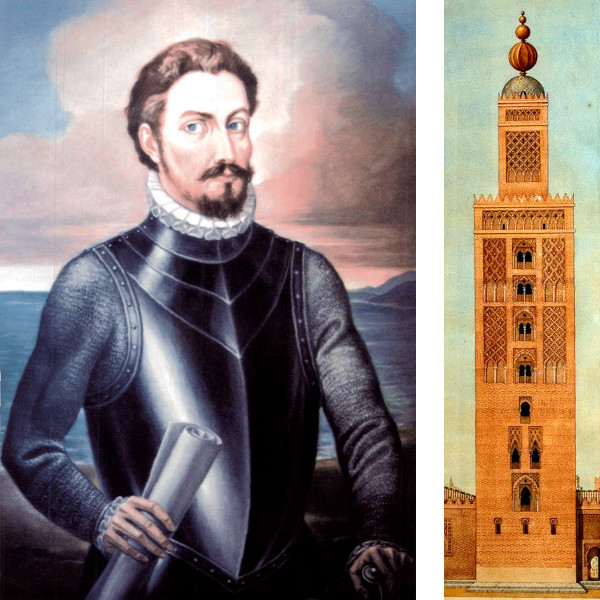
Commons
This just caught my eye — a feat attributed to the Spanish explorer Alonso de Ojeda, who would later accompany Columbus and name Venezuela:
Queen Isabella being in the tower of the cathedral at Seville, better known as the Giralda, Ojeda, to entertain her majesty, and to give proofs of his courage and agility, mounted on a great beam which projected in the air, twenty feet from the tower, at such an immense height from the ground, that the people below looked like dwarfs, and it was enough to make Ojeda himself shudder to look down. Along this beam he walked briskly, and with as much confidence as though he had been pacing his chamber. When he arrived at the end, he stood on one leg, lifting the other in the air; then turning nimbly round, he returned in the same way to the tower, unaffected by the giddy height, whence the least false step would have precipitated him and dashed him to pieces.
Allegedly he afterward threw an orange to the top of the tower, which would have been at least 88 meters tall at the time. This account is from Washington Irving’s biography of Columbus, and even Irving calls it “unworthy of record, but that it exhibits the singular character of the man.”
Emerson mentions Ojeda’s balancing act in his 1870 essay on success, claiming also that “Olaf, king of Norway, could run round his galley on the blades of the oars of the rowers when the ship was in motion.” I’m not even pursuing that one.
06/12/2024 UPDATE: Apparently oar-walking is not as far-fetched as it sounds. While the feat is rare, it is said that King Olafr Tryggvason did indeed run on the oar blades of his ship the Long Serpent as it was being rowed. Kirk Douglas manages the feat pretty well in the 1958 film The Vikings (thanks, Orion):
